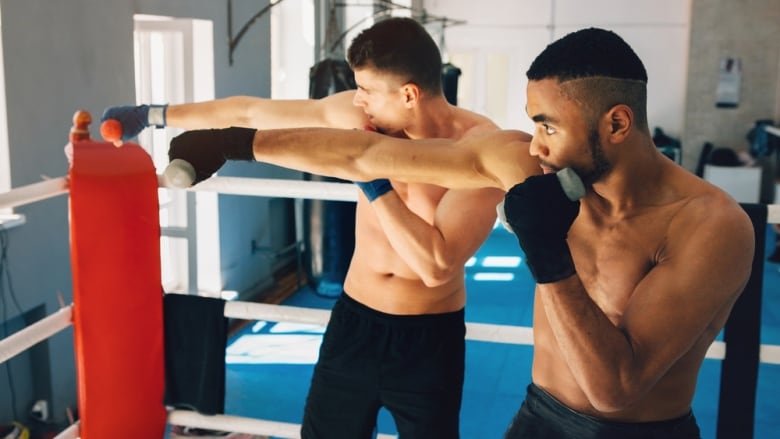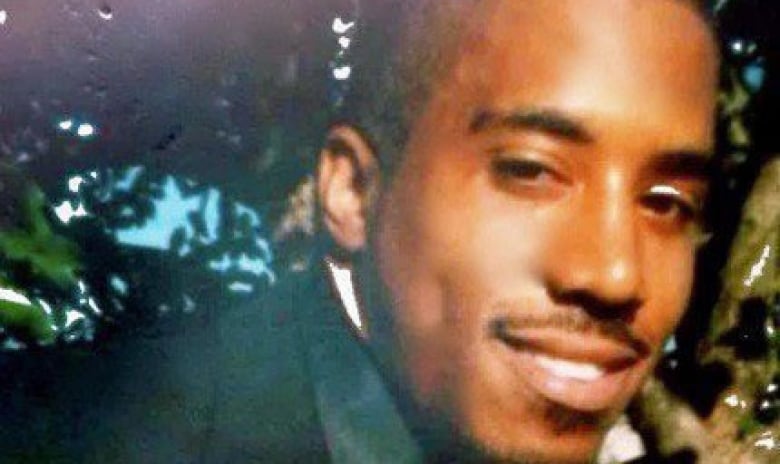Our brains see black men as bigger, stronger than white men of same size: study
Racial bias didn't only exist between black and white but also between different skin tones

Have you ever been witness to an event with a friend only to conclude you both had different accounts aboutwhat had occurred? This is known as perception bias. Our views and beliefs can cloud the way we perceive things and perception bias can take on many forms.
New research published in theJournal of Personality and Social Psychology found that people tend to perceive young black men as larger, stronger and more threatening than white men of the same size. This, the authors say, couldplace them at risk in situations with police.
- Yes, Canada, anti-black racism lives here: journalist Desmond Cole
- Retired black Halifax police officer opens up about racism on the force
The research was promptedby recent police shootings against black men in the United States particularlythose involving descriptions of men that didn't correspond with reality.
Take, for example, the case of Dontre Hamilton. In 2014, theunarmed Hamiltonwas shot 14 times and killed by police in Milkwaukee. The officer involved testified that he believed he would have been easily overpowered by Hamilton, who he described as having a muscular build. But the autopsy report found that Hamilton was just five foot seven and weighed 169 pounds.

Looking at the Hamilton case, as well as many other examples, the researchers sought to determine whether or not there were psychologically driven preconceived notions about black men over white men.
In their experiments (seven individual studies were undertaken), more than 950 online participants from across the U.S. were shown photographs of both white and black faces belonging to men ofequal weight and height. The participants were then asked to provide the height, weight, strength and perceived muscularity of each person.
Not only did the participants overwhelmingly believe that the black men were stronger and larger than they were between five and10 pounds heavier they also believed that police would be justified in using force to subdue them, even if it were to harm the men.
Not only black vs. white
The bias doesn't only exist between black and white but also between different skin tones.The researchers found that black participants perceived dark-skinned black men as larger and more muscular than light-skinned black men.
However, unlike white participants, black participants did not feel threatened by black men.
"Our eyes and our brains actually distort and exaggerate pieces of information, and we never really think about that," saidNicholas Rule,associate professor of psychology at the University of Toronto and Canada research chair in social perception and cognition, who was a co-author of the study.
Lying eyes
Our eyes deceive our brain quite often.
A 1950s study found that poor children saw coins as being larger than they were because they perceived them as holding more value (a variation of this experimentconducted in 2007supported the findings).
Other studies have shown that if we're extremely thirsty, we'll think a glass of water is closer than it is. This, Rule said, can be beneficial, say in the case of being stranded: we'll keep going if we think relief is near.
We also see threats like snakes as being larger than they are, which, from an evolutionary standpoint, can also be beneficial.
But this perception of black men is a social issue rather than one of survival, and that's why it needs to be eliminated, Rule said.
The researchers would like to take these theoretical analyses and examine real-world applications, with police in the field, to see if perception bias influences decisions made on the fly.
We need to move into action and we need to have education that is transformative.- George Dei, Ontario Institute for Studies in Education
George Dei, who teaches social justice education at the Ontario Institute for Studies in Education said that preconceived notions about black men and women such as being perceived as a threat or asless intelligent, or even not being seen as human beings are deeply rooted in racism that has occurred over hundreds of years. But he has hope that, through education, racism and bias can be eliminated.
"It's one thing to talk about them, it's another to address them," he said. "We need to move into action and we need to have education that is transformative."
Studies like this can help, but it's important to also address social issues surrounding bias and racism, Dei said. And it's important that we are accountable for our actions.
"I don't think we can subject the discussion into a scientific analysis; we need to see it as a social construction," he said. "It is real and it's consequential."
Eliminating bias
Rule said that awareness is the first step in combating bias. If officers know they have a tendency to be biased, they can wait for more information in a situation before reacting.

While eliminating bias is the end goal, until that is achieved, the knowledge that the size of black men can be exaggerated in the minds of people might also help black men, Rule said.
"For black people, it's good for them to know these biases are happening, as well," he said. "If they're in a situation where any reasonable person would think that they should not be a threat to a police officer, they might say, 'Hold on a second, I know that peopleare goingto misperceive my size, and so let me be extra careful right now.'
"It won't eliminate every case," he said. "And training will help in all of this. But certainly this is a first step into understanding this."












_(720p).jpg)


 OFFICIAL HD MUSIC VIDEO.jpg)
.jpg)



























































































